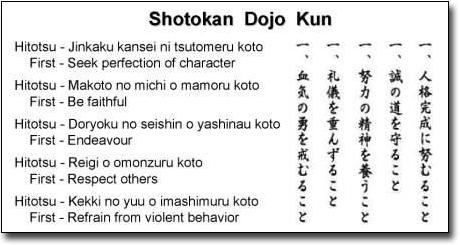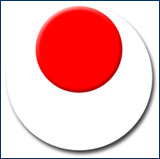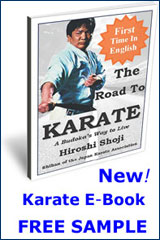|
Japanese Karate - Dynamic & EffectiveMajor Karate Styles Take the 4 big established Japanese Karate styles - Shotokan, Goju ryu, Shito Ryu and Wado Ryu - add Shukokai (a version of Shito Ryu) and Kyokushin, then throw in some variations and that’s almost it !
There’s more of course - hundreds of thousands of Karate schools worldwide all doing recognizable types of Karate - traditional budo, progressive, hybrid or cutting-edge sport and all of them share a common line back to Japan through one or more of the major styles. Planning a Visit to Japan? For a great choice of hotels with discount prices visit our friends at Where to stay in Tokyo for more information. 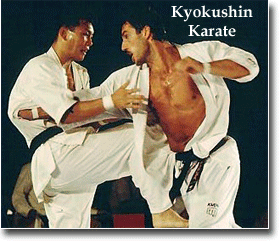 Japanese Karate is primarily a striking art. All styles use similar moves; blows made with the closed fist, the open hand, the legendary Karate Chop, the elbow, feet and knees as well as an array of blocks, deflections, sweeps, throws - even grappling.
Japanese Karate is primarily a striking art. All styles use similar moves; blows made with the closed fist, the open hand, the legendary Karate Chop, the elbow, feet and knees as well as an array of blocks, deflections, sweeps, throws - even grappling. Some Karate schools train with weapons even although Karate means ‘empty hand’. Moves vary depending on the philosophy of the style and whether the emphasis is on destructive power or subduing an attacker. Whether a Karate kick or punch is delivered with the raw power of Kyokushin, the speed and finesse of Wado Ryu, the immovable strength of Goju Ryu or the dynamism and depth of Shotokan, it's still a kick or a punch only the method changes. The Three K's Common to all forms of Japanese Karate are 3 aspects known as; Kihon (basic training) Kumite (sparring) and Kata (formal exercise). Again the emphasis on these varies from style to style but the similarities in actual moves across all the different schools are unmistakable.
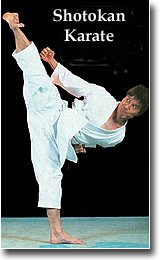
Best Style? To the most asked question “Which Karate style or school is best?” - there can’t be a definitive answer because it only raises another question - “Best for what?" If comparisons or judgments need to be made, it’s better to ask “What suits ME best?” and to consider what it is YOU actually want out of Karate.
- Self defence?
- Confidence, discipline, mental toughness? - Fitness, strength, flexibility, co-ordination? - Sporting Results, medals, titles, recognition? Some styles offer all of these in good proportion and some emphasize one or more aspect over the others. But one thing’s for sure - Karate training is up there as one of the best all-round physical and mental workouts you will get anywhere. Shotokan, Wado Ryu, Goju Ryu or ??
A styles effectiveness has little to do with the style itself it has much more to do with; the quality of instruction (good teachers stand out from the crowd), individual training intensity (temporary is not an option - you have to do the yards) but above all, the most critical element is the Karateka (student) mindset. These are the things that make Karate effective - ‘style’ is secondary. At dynamic-karate we practice Shotokan the most popular form of Karate inside and outside of Japan. If you follow the links below you’ll find some easy to digest information about the Shotokan style and the other major styles and groups. The Aim of Japanese Karate Karate aims for more than physical perfection of technique, it aspires to building character. All styles have a code of conduct called “Dojo Kun” (training hall rules) usually spoken out loud at each class. This is much more than club etiquette - more a set of values and guidelines as to what is expected of those who practice.
Karate’s highest ideal has nothing to do with conflict or violence. All styles agree the most important thing is self-control without it this potentially lethal art would be no better than a loaded gun in the hands of a criminal. Peace harmony and non-violence are central Karate principles. From novice to master, Karate people train to become responsible human beings and law abiding citizens. Listen to the Shotokan Dojo Kun
Reasons to Learn Traditional Karate attracts all kinds of folks because it is a low cost activity with endless benefits...
Back to Top of Page Back from Japanese Karate to Karate - Home |





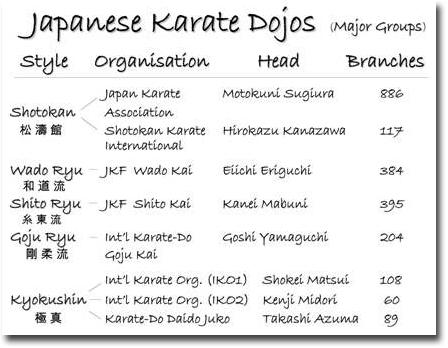
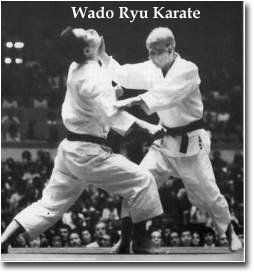 Some Japanese Karate styles are more suited to certain ages and body types - but it depends what you want to achieve and the amount of time and effort you are prepared to put in.
Some Japanese Karate styles are more suited to certain ages and body types - but it depends what you want to achieve and the amount of time and effort you are prepared to put in. 
